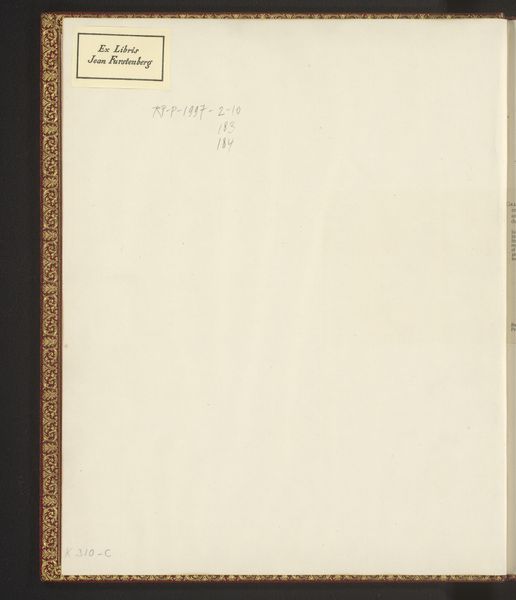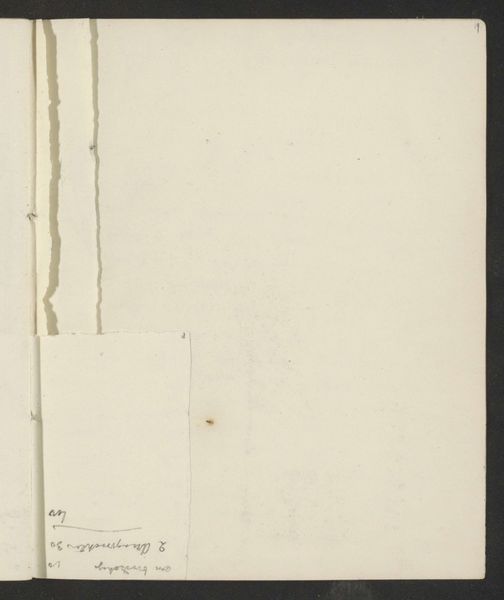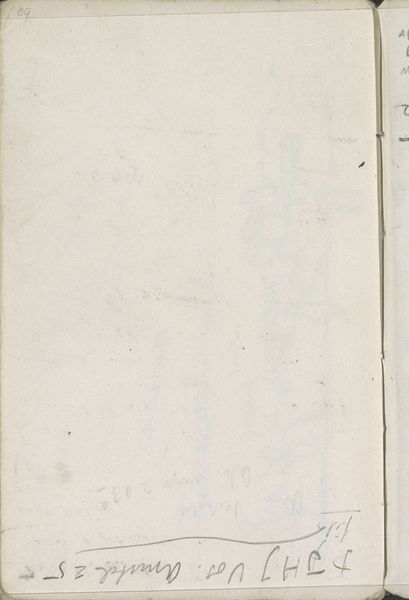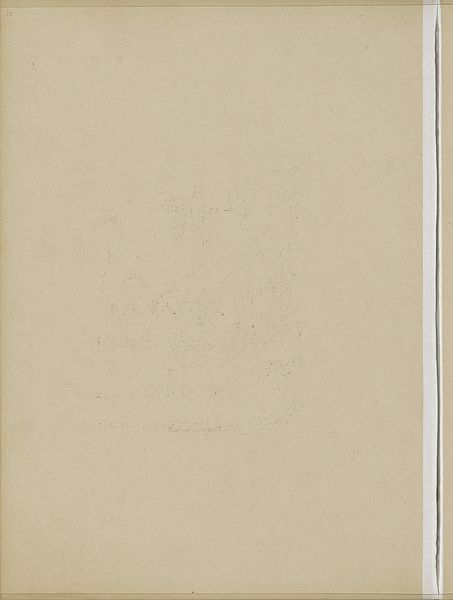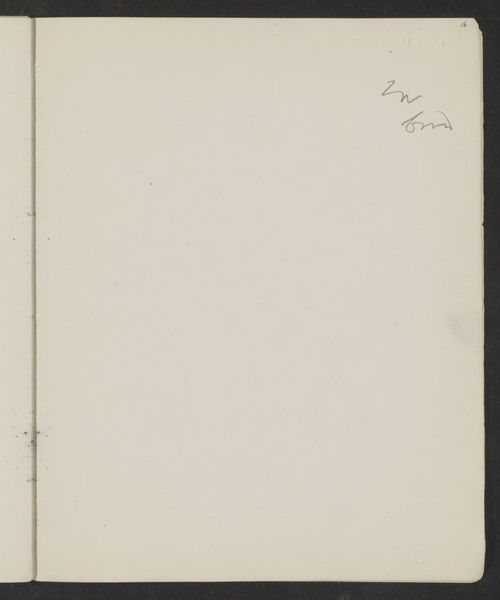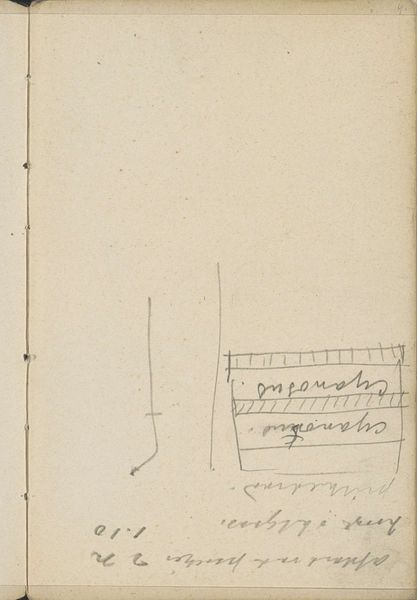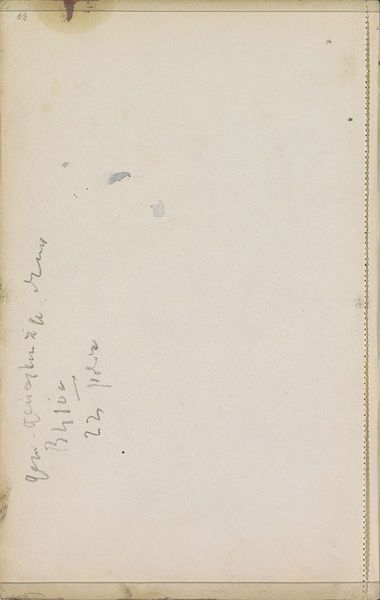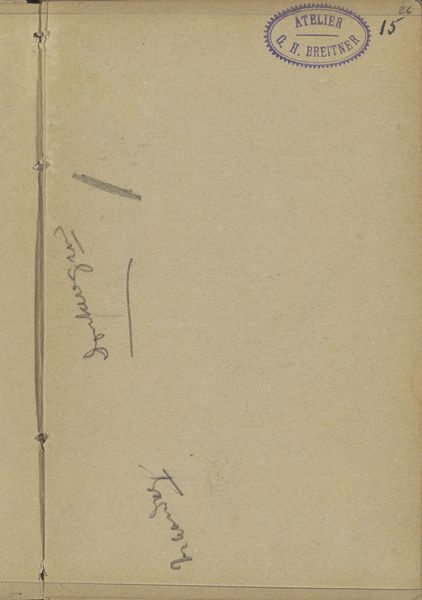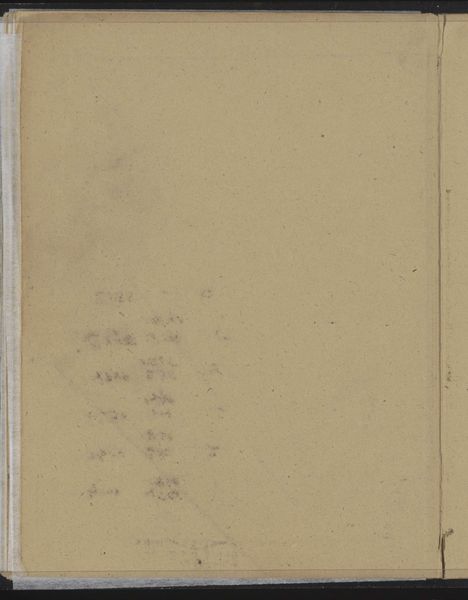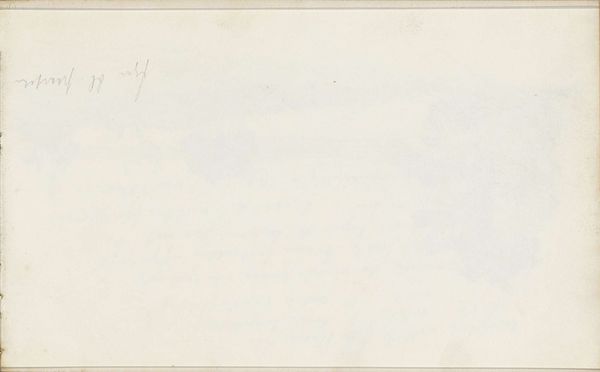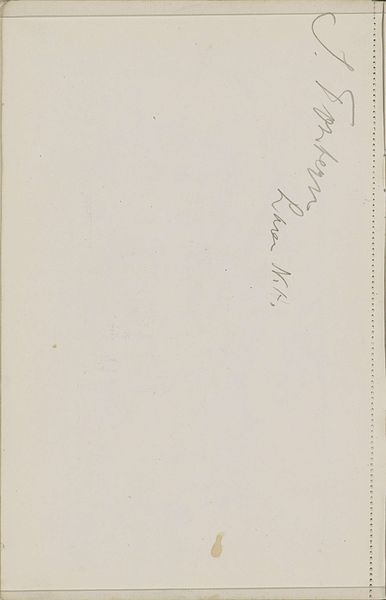
drawing, paper, pencil
#
drawing
#
aged paper
#
quirky sketch
#
sketch book
#
hand drawn type
#
paper
#
personal sketchbook
#
idea generation sketch
#
sketchwork
#
geometric
#
pencil
#
line
#
sketchbook drawing
#
storyboard and sketchbook work
#
sketchbook art
Copyright: Rijks Museum: Open Domain
Editor: This is "Borden," a drawing from 1865 by Johan R. Kruyff, done with pencil on paper. It reminds me of an architect's notebook page. There's a real sense of the hand at work here, not just in the drawing, but in the text beside the structure. What stands out to you about this piece? Curator: It's intriguing how the mundane is elevated. We have humble materials – pencil and paper, the kind available en masse due to industrial production methods. This simple, almost utilitarian approach belies the skilled hand at work and invites a closer look at its societal position. Consider also the function of paper at this time; it serves both artistic and practical ends; how do the industrial processes that produced this very paper influence our reading of its content? Editor: So you're focusing on how readily available materials played a part? Curator: Precisely. The sketch feels deliberately casual, an unassuming note in a mass-produced sketchbook, but the artist still labors to translate these thoughts onto paper. Was Kruyff intentionally exploring the implications of these newly accessible materials for artistic production and thought? Editor: That's a perspective I hadn't considered. I was looking at it more in terms of architectural design. Curator: But isn't design also labor? By bringing architecture, planning, and the sketch into a readily available notebook format, Kruyff may be highlighting this synthesis between hand work and available medium of expression during the industrialising Victorian era. How else might access to cheap and portable drawing medium impact architectural drawing practices? Editor: It definitely changes how I see it now. Looking at the materiality and context, rather than just the design, offers a richer understanding. Curator: Indeed. This piece provides insights into how artists worked within, and perhaps even reflected on, the changing landscape of material culture and labor of the time.
Comments
No comments
Be the first to comment and join the conversation on the ultimate creative platform.
